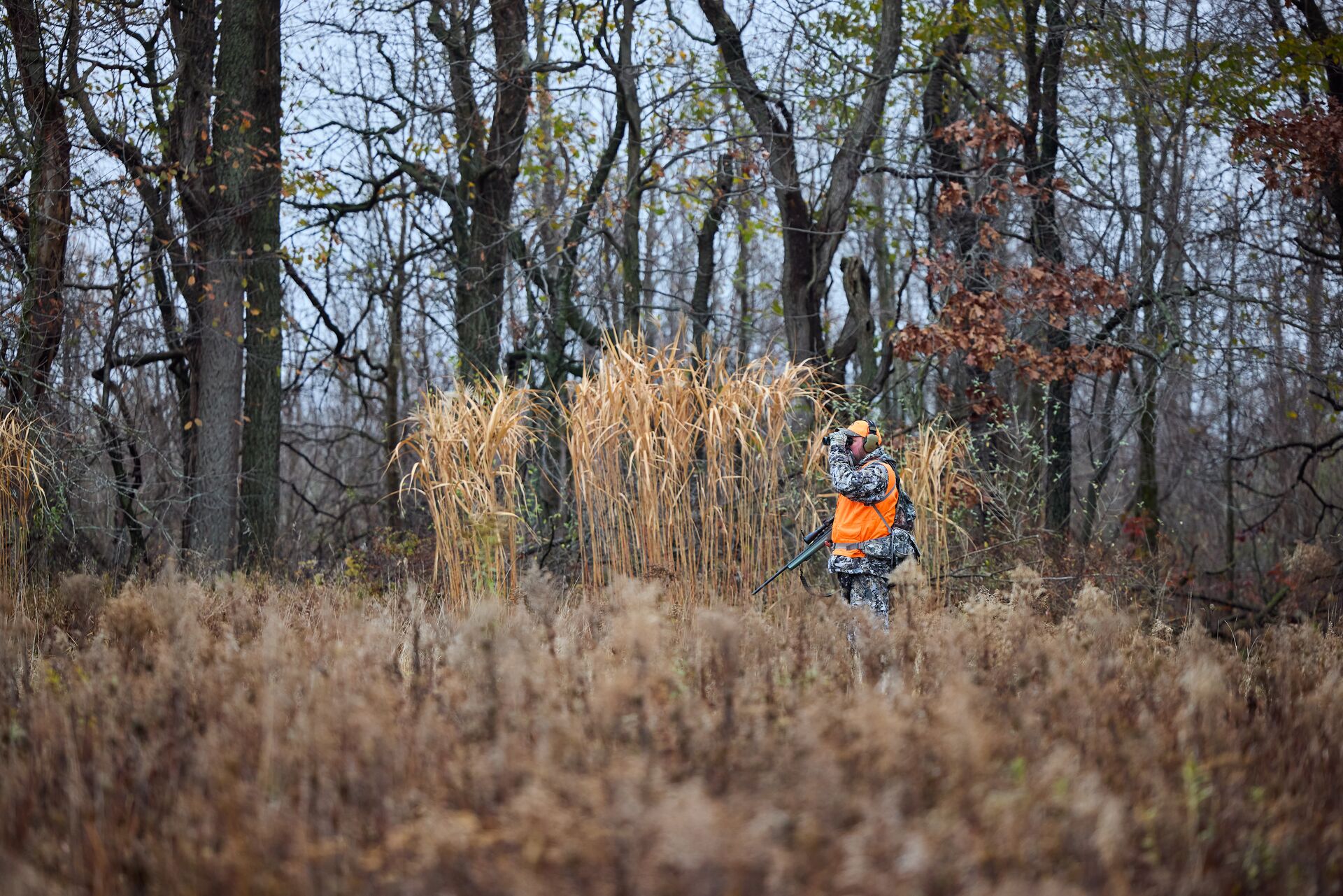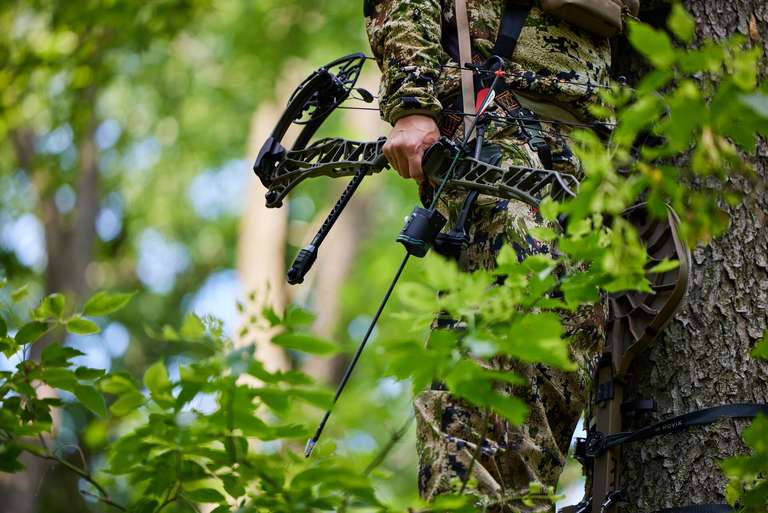Conservation vs Preservation: What Hunters Need to Know

Every time you buy a hunting license, tag, or federal duck and migratory bird stamp, you've become an active participant in our ongoing story of protecting wildlife and wild places.
Hunters are historically some of the most committed conservationists because we fund habitat restoration, species recovery, and wildlife research.
There is a difference, however, between conversation vs. preservation. Understanding these two philosophical approaches to our natural world is critical for every hunter who wants to make educated decisions and leave a lasting impact on the world that brings so much joy and meaning into our lives.
Today, we talk about the difference between conservation and preservation and why these concepts are important when learning how to hunt better.

Defining the Core Concepts: Conservation vs. Preservation
As a hunter, it's helpful to understand the distinction between conservation and preservation.
Conservation is like gardening, where we carefully tend to and use natural resources so they will thrive for generations. Conservation acknowledges that we can actively participate in nature and harvest its resources while maintaining a healthy and balanced ecosystem. Regulated hunting, habitat restoration, and wildlife population management are vital conservation components.
However, preservation is more like letting the garden grow wild, emphasizing the protection of nature while minimizing human interference. Preservation areas, like America's national parks, serve as sanctuaries, ensuring that certain landscapes remain wild and undisturbed.
Understanding Contrasting Goals and Methods
As a hunter, understanding the relationship between conservation and preservation involves examining each approach's goals and methods and how they may sometimes clash when it comes to protecting wildlife and habitats.
Conservation strategies attempt to balance human use and activities with sustainable resource management. The methodology includes regulating hunting seasons, harvest limits, habitat restoration, and species management.
Conservation strives to allow responsible use while maintaining ecological balance.
Preservation strategies, however, focus on minimizing human interference to keep species and habitats as undisturbed as possible. This approach typically results in lands closed to hunting and other activities to allow the ecosystem to function without external pressures.
The goal of the preservation model is to maintain pristine environments where wildlife can thrive undisturbed.
While advocates of conservation vs preservation may sometimes clash, they often complement each other. For instance, preservation areas frequently protect critical breeding habitats, which creates a sustainable wildlife population that will eventually migrate into conservation-managed landscapes.

Historical Context and Hunting's Role in Conservation
Because we have firsthand and close experiences with the natural world, hunters have always been at the forefront of North American conservation. Theodore Roosevelt, former president and avid hunter, established national parks and wildlife refuges that have benefitted hunters for over a century.
Hunters' support of nonprofit organizations like Ducks Unlimited and the Rocky Mountain Elk Foundation showcase how hunter donations actively support habitat restoration and species recovery.
Every time you purchase a hunting license or equipment, you contribute to conservation efforts through legislation like the Pittman-Robertson Wildlife Restoration Act.
Signed into law by President Franklin D. Roosevelt on September 2, 1937, this act provides funding for wildlife conservation, restoration, and hunter education and safety programs. That funding comes from tax proceeds on firearms, ammunition, and archery equipment and is redistributed to state wildlife agencies.
Look at it this way: Every piece of hunting equipment you purchase supports the future of hunting and wildlife in America.

How Hunting Supports Conservation Efforts
Even though license fees and the Pittman-Robertson Act provide a critical foundation for conservation initiatives, your contributions as a hunter extend far beyond financial support.
In partnership with state and federal wildlife agencies, hunters can prevent wildlife populations from exceeding their habitat's carrying capacity.
Some species, like deer and elk, can overgraze the foliage, degrade the habitat, and rapidly spread diseases like chronic wasting disease (CWD). Waterfowl hunting along the major flyways helps support sustainable population levels that improve vital breeding and wintering habitats.
Hunter-driven and hunter-funded conservation efforts have had a lasting impact on species and ecosystem recovery like:
- Wild Turkey: America's wild turkey population was nearly extinct in the early 1900s. Thanks to hunting regulations, habitat restoration, relocation, and financial support from hunters, there are more than six million wild turkeys across North America today. This incredible comeback demonstrates how regulated hunting and conservation can work together to restore a species from the brink of extinction.
- Wood Ducks: Similar to the wild turkey, habitat destruction and unregulated hunting decimated wood duck populations by the early 20th century. With the Migratory Bird Treaty Act of 1918 providing legal protection, hunters and other conservationists launched nest box programs to replace lost habitat and safe nesting sites. Today, those decades-long efforts have helped wood ducks thrive across their range, with approximately three million breeding pairs in the U.S.
- Rocky Mountain Elk: Elk populations have significantly increased their range due to reintroduction programs, habitat protection, and the work of hunting conservation organizations like the Rocky Mountain Elk Foundation (RMEF). Hunting-funded initiatives through the RMEF have protected and enhanced more than 8.9 million acres of elk habitat and reintroduced elk to the Great Smoky Mountains National Park in 2001.
These recoveries are directly tied to America's hunting community, which is dedicated to conservation principles and continually shows a willingness to invest in wildlife management.

Why Hunters Should Care About Preservation Too
Protected areas closed to hunting still play a vital role in maintaining wildlife populations. These wildlife refuges offer animals safe breeding grounds, winter havens, and migration corridors. When wildlife can thrive in preserved areas, it will ultimately expand into areas where regulated hunting is allowed.
Hunters and preservationists also share many common goals. Both groups want to protect crucial wetlands, preserve forests that shelter game, and maintain watersheds free from pollutants. By supporting preservation efforts, hunters help create a network of protected habitats that strengthens ecosystems while ensuring sustainable and better hunting opportunities for future generations.
How Hunters Can Actively Support Conservation
As hunters, we have the power to make a powerful impact on wildlife conservation.
Here are a few easily actionable steps you can take today:
- Join a Conservation Organization: Support nonprofits actively managing projects for the species you hunt or funding habitat restoration and research. Check out groups like Ducks Unlimited, Pheasants Forever, Whitetails Unlimited, the National Wild Turkey Federation, or the Rocky Mountain Elk Foundation.
- Volunteer for Habitat Restoration Projects: Conversation organizations and your state wildlife agencies often need help with tree planting, wetland restoration, river cleanup, and fence repair projects.
- Advocate for Sensible Conservation Policies: Follow local wildlife issues and policies and get involved in supporting those that protect critical habitats and promote sustainable wildlife management.
- Engage in Ethical Hunting: Adhere to all federal and state regulations, harvest limits, and fair chase practices. Follow the "leave no trace" philosophy in the field, including carrying out your waste and spent cartridges.
- Report Illegal Activities: Poaching and other illegal hunting and firearm activities not only harm wildlife, they undermine conservation efforts hunters have worked decades to establish.
Remember: Bad behavior in the field also jeopardizes the public trust and puts hunting opportunities for future generations at risk.

Learn More About Your Role as a Hunter with ilearntohunt
Conservation vs preservation should not be opposing philosophies for hunters. Each approach protects our natural world, and hunters can play a critical role in balancing the ongoing national and local dialogue on conservation vs. preservation.
To learn more about your role as a hunter and conservationist, consider completing a state-specific hunter education course like those offered here through ilearntohunt. You'll learn about land stewardship, ethical hunting practices, field skills, and much more to help you stay better informed and how to help continue the hunter's proud legacy of conservation.
It's easy to get started! Choose the course for your state, then start our fun, gamified course that makes it easy and enjoyable to learn.






